Embracing Virtual Care for Everyday Management and Prevention
Telehealth has emerged as a transformative solution in healthcare, offering accessible, efficient, and comprehensive services for managing common illnesses and promoting preventive health measures. By leveraging digital technologies, telehealth makes it possible for patients to receive high-quality care from the comfort of their homes, bridging gaps in healthcare access while supporting ongoing health monitoring and wellness endeavors.
Understanding Telehealth and Its Operation in Everyday Healthcare

What is telehealth and how does it manage common illnesses and preventive care?
Telehealth is a digital approach to healthcare that uses technology such as video calls, phone chats, and online platforms to deliver medical services remotely. This form of healthcare access is designed to make medical assistance more convenient and widespread.
Patients can consult with licensed healthcare providers—including doctors, nurse practitioners, and mental health specialists—without leaving their homes. These virtual visits allow for diagnosis and treatment of common illnesses such as cold, flu, sinus infections, ear infections, urinary tract infections, yeast infections, and skin conditions.
Besides treating illnesses, telehealth plays a vital role in preventive care. Patients can undergo health screenings, receive counseling on healthy lifestyle choices, and get management plans for chronic diseases like high blood pressure and diabetes. Remote monitoring devices—such as blood pressure monitors, blood sugar meters, and oxygen level trackers—provide real-time data to healthcare providers, facilitating early detection of potential health issues.
This technology benefits populations in remote or underserved areas by reducing travel time and waiting periods, enhances ongoing communication between patients and providers, and can lower healthcare costs by preventing hospitalizations. However, telehealth has some limitations, including the absence of physical exams and the reliance on stable internet connections. Overall, it serves as an effective complement to traditional in-person care by promoting accessibility, early intervention, and continuous health management.
Advantages of Telehealth for Managing Routine Health Concerns

What are the benefits of using telehealth for managing everyday health issues?
Utilizing telehealth for routine health management provides several significant advantages. First and foremost, it offers greater convenience and access to healthcare services. Patients in remote or underserved areas can connect with primary care providers, specialists, and mental health professionals without traveling long distances. This is especially valuable during pandemics or for individuals with mobility issues.
Telehealth reduces waiting times and minimizes the need for in-person visits, fitting easily into busy schedules. Patients can schedule virtual appointments promptly or see providers within minutes when urgent issues arise. This immediacy promotes quicker diagnosis and treatment, which can improve health outcomes.
Furthermore, telehealth supports continuous management of chronic diseases by enabling regular check-ins and remote monitoring through devices that measure blood pressure, blood sugar, or oxygen levels. This ongoing oversight helps prevent complications and promotes better adherence to treatment plans.
Health equity is another important benefit. Telehealth lowers barriers for vulnerable groups such as the elderly, disabled, or economically disadvantaged by making healthcare more accessible and less disruptive. Family members can also participate more easily in care discussions, providing vital support.
From a financial perspective, telehealth can be cost-effective. Patients save on travel expenses and time off work, while healthcare providers reduce overhead costs associated with physical facilities.
Overall, telehealth preserves or enhances the quality of care, increases patient satisfaction, and fosters active engagement in health management—making it a practical, efficient solution for everyday health concerns.
Suitable Conditions and Cases for Telehealth Consultations
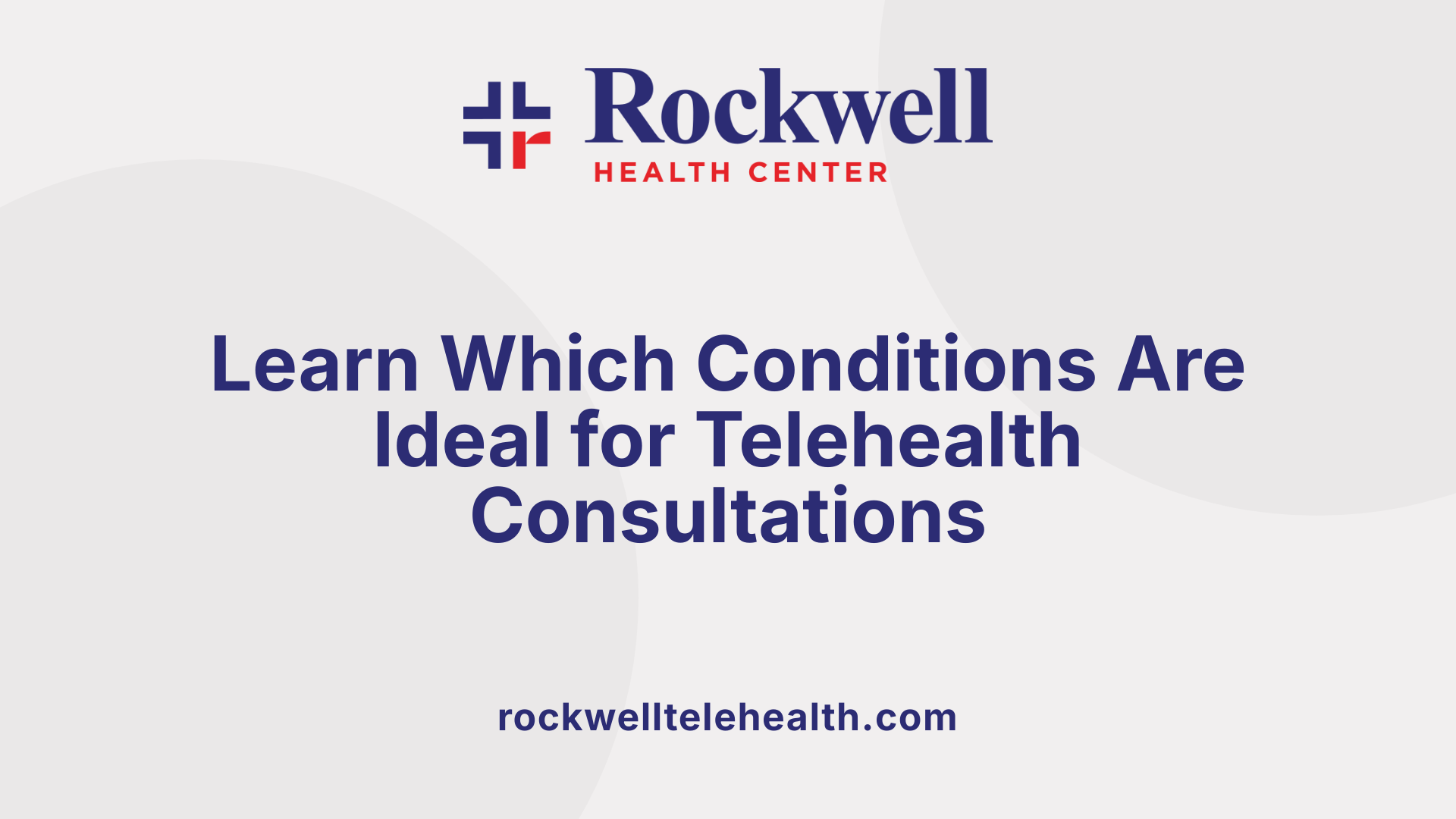
What types of health conditions are suitable for telehealth consultation?
Telehealth has become an increasingly popular option for a variety of medical issues, especially those that do not require an immediate physical examination. Conditions suitable for virtual diagnosis and treatment generally include minor illnesses such as colds, the flu, coughs, sore throats, allergies, sinus infections, and skin problems like rashes or acne.
Patients experiencing respiratory symptoms like mild coughs or minor skin issues can often be managed effectively through telehealth consultations. This approach allows healthcare providers to assess symptoms visually and through patient history, making it possible to recommend appropriate treatment or medication.
Mental health services, including therapy for depression, anxiety, and stress-related conditions, are also well-suited for telehealth platforms. With video or phone sessions, mental health professionals can provide counseling and ongoing support without requiring patients to visit clinics in person.
For chronic conditions such as diabetes, high blood pressure, or ongoing management of asthma, telehealth offers continuous monitoring and regular check-ins. Many platforms integrate remote monitoring devices that allow patients to track vital signs and share data with their providers, enabling effective disease management.
Urinary tract infections and yeast infections are common bacterial or fungal conditions that can often be diagnosed based on symptoms and medical history during a virtual visit. Providers may prescribe antibiotics or antifungal medications after evaluating patient-reported symptoms.
In urgent care scenarios, minor issues like pink eye, insect bites, minor burns, or mild respiratory problems can be addressed via telehealth consultations. While these virtual visits are suitable for initial assessment and guidance, severe or complicated cases still require in-person evaluation.
Although telehealth is versatile, it does have limitations. Conditions that demand physical examinations, diagnostic tests, or procedures—such as severe chest pain, broken bones, or significant injuries—are not appropriate for virtual care. In these cases, prompt in-person care remains essential.
Overall, telehealth offers a safe, convenient, and efficient way to manage a wide range of health conditions, supporting ongoing care and reducing unnecessary visits to healthcare facilities.
Enhancing Preventive Health and Wellness Through Telehealth

How does telehealth support preventive health and wellness?
Telehealth plays a significant role in promoting preventive health by making it easier for individuals to access essential health services without the need for in-person visits. Through virtual consultations, patients can receive routine screenings and counseling for issues such as blood pressure, diabetes management, and lifestyle advice. Remote monitoring devices, such as blood pressure cuffs and glucose monitors, enable ongoing health data collection, allowing clinicians to spot potential problems early.
This proactive approach helps prevent the progression of illnesses and reduces the likelihood of complications. For underserved populations, telehealth breaks down barriers like transportation and geographic distance, ensuring more people can benefit from preventive care.
Digital tools encourage patients to adhere to medication schedules, participate in health education, and complete recommended screenings. These approaches foster healthier behaviors and improve compliance with treatment plans.
By integrating telemedicine into everyday health routines, providers can emphasize prevention and early intervention, aligning with global efforts to enhance population health, reduce disparities, and lower overall healthcare costs.
What to Expect During a Telehealth Visit: The Patient Experience

Preparation steps
Before a telehealth appointment, patients should ensure they have a device such as a smartphone, tablet, or computer with a reliable internet connection. It’s helpful to test the device and platform in advance to avoid technical issues during the consultation. Patients should gather all relevant health information, such as current medications, recent test results, and a list of symptoms or questions. Filling out any preliminary paperwork or health questionnaires provided by the provider can streamline the process. Understanding potential costs and privacy protections helps set expectations and ensures a smooth visit.
Technology requirements
A successful telehealth experience depends on user-friendly technology. Patients generally need a device equipped with a camera and microphone, such as a smartphone, tablet, or computer. The platform used for the consultation might require downloading an app or logging into a secure website. It is essential to have a private, well-lit space for the appointment to maintain confidentiality and comfort. Most telehealth platforms are designed to be accessible and straightforward, with clear instructions for scheduling and connecting to the virtual visit.
Consultation process
During the appointment, patients can expect to communicate with a licensed provider via live video or phone call. The healthcare professional will ask about symptoms, review medical history, and examine any visual cues observable through video. They may prescribe medications electronically, order labs, or recommend an in-person visit if necessary. Many telehealth providers can also discuss mental health concerns and manage chronic conditions. Throughout, patients should feel encouraged to ask questions, express concerns, and share relevant health data or observations.
Follow-up and documentation
After the consultation, providers typically send a summary of the visit, including treatment plans, prescriptions, and follow-up instructions, through a secure patient portal. Patients are encouraged to save or print this information for reference. Follow-up appointments may be scheduled to monitor progress or manage ongoing conditions. Many platforms allow easy access to test results and direct communication with providers, supporting continuous care. Overall, telehealth aims to offer convenient, comprehensive, and secure healthcare experiences that fit into patients’ lives seamlessly.
Insurance Coverage, Reimbursement, and Legal Standards in Telehealth
Are telehealth services covered by insurance, and what are the reimbursement policies?
Coverage and reimbursement policies for telehealth services differ based on insurance types and state regulations. Many commercial insurance plans have expanded their coverage during recent years, often providing at least partial coverage for virtual care options. This trend is especially evident in states with laws requiring parity between telehealth and in-person visits, which mandate insurers to reimburse telemedicine services similarly to traditional healthcare services.
Medicaid programs' policies on telehealth reimbursement vary considerably by state. Some states offer broad coverage and reimbursements for a wide range of telehealth services, while others have more limited policies. It's crucial for providers and patients to verify specific state Medicaid policies to ensure coverage.
Medicare, the federal health insurance program primarily for seniors, covers certain telehealth services such as office visits, mental health counseling, and some preventive care, with reimbursement rates aligned with in-person services. However, recent regulatory changes plan to restrict some telehealth access in rural areas after October 2025, potentially impacting coverage availability.
In addition to insurance policies, providers must usually hold valid state licenses in the state where the patient is located when delivering telehealth services. Cross-state practice remains regulated, and licensing requirements may vary depending on jurisdiction.
Patients and healthcare providers should proactively confirm insurance coverage and reimbursement policies ahead of virtual appointments to avoid surprises. As telehealth regulations are continuously evolving, staying updated with state and federal policy changes is vital.
In summary, while telehealth services are increasingly covered and reimbursed, coverage levels and policies can differ widely based on location, insurance type, and the specific healthcare service offered. Verifying these details in advance ensures smoother access and billing processes.
Technology and Remote Monitoring Tools Supporting Preventive Care
What technological tools and remote monitoring devices are used in telehealth for preventive care?
In telehealth for preventive care, a variety of technological tools and remote monitoring devices play a crucial role in enhancing patient management and early detection of health issues. These tools include devices such as digital blood pressure cuffs, glucometers for blood sugar monitoring, pulse oximeters to measure oxygen levels, and ECG monitors that can transmit cardiac data directly to healthcare providers.
Wearable sensors and smart devices are also widely used. Examples include activity trackers that monitor physical activity levels, sleep monitors to assess sleep quality, Bluetooth-enabled thermometers for temperature checks, and smart scales that record weight and body composition.
Many systems integrate these devices with smartphone applications, allowing patients to use their personal devices—commonly referred to as bring-your-own-device (BYOD)—to collect and share health data. This constant flow of information supports early detection of potential health issues, enables continuous management of chronic conditions, and encourages patient engagement in maintaining and improving their health.
Through these connected devices, both patients and providers can track trends over time, set personalized health goals, and adjust treatment plans proactively. The integration of advanced remote monitoring tools signifies a significant step forward in making preventive care more accessible, timely, and effective, ultimately reducing the need for urgent or emergency interventions.
Best Practices and Guidelines for Effective Telehealth Use for Minor and Preventive Care
What are the best practices and guidelines for effectively using telehealth for minor and preventive health issues?
Utilizing telehealth for minor and preventive care can be highly effective when best practices are followed. One of the most important steps is choosing reputable providers. Many platforms, like Doctor On Demand or Johns Hopkins Medicine’s MyChart, employ licensed professionals such as doctors, nurse practitioners, and mental health specialists, ensuring quality care.
Communication and preparation are crucial. Patients should come prepared with questions and a clear overview of their health concerns. Knowing how to use the platform, whether it’s a smartphone app or a computer, also helps prevent delays.
Ensuring privacy and security must be prioritized. Patients should find a quiet, private space during virtual visits to maintain confidentiality. Testing devices and internet connections beforehand can reduce technical hitches. Following telehealth etiquette—such as minimizing distractions and staying professional—enhances the experience.
Active participation improves outcomes. Patients should openly share relevant symptoms, ask questions, and discuss concerns. Feedback during and after visits is essential for continuous improvement and satisfaction.
Healthcare providers should adhere to established standards, including HIPAA compliance, and inform patients of their privacy rights. Developing contingency plans for potential technical issues ensures safety and minimizes disruptions. Tailoring telehealth services to diverse community needs, such as mental health support or chronic disease management, can expand access while recognizing when in-person visits are necessary.
In summary, effective telehealth use involves careful provider selection, clear communication, ensuring privacy, active engagement, and adherence to professional guidelines. These practices help optimize the safety, effectiveness, and convenience of virtual care for minor and preventive health issues.
The Future of Virtual Healthcare: Opportunities and Limitations
Telehealth is reshaping how individuals approach everyday health management and preventive care. Its ability to increase healthcare access, reduce costs, and support continuous health monitoring makes it a vital component of modern medical practice. However, it must be integrated thoughtfully, adhering to legal standards, ensuring technological reliability, and recognizing its limits, such as the need for physical examinations in certain cases. As technology advances and regulations evolve, telehealth will likely become even more sophisticated and accessible, further empowering patients and providers to collaborate effectively in maintaining health and preventing illness.
References
- Doctor On Demand® Telehealth: 24-Hour Online Doctor
- Benefits of Telemedicine
- Telehealth: Technology meets health care
- Telehealth & RPM: 7 Ways Virtual Care is Preventive Care
- Telemedicine for healthcare: Capabilities, features, barriers ...
- What is Telehealth Coverage?
- Telehealth Interventions to Improve Chronic Disease
- FAQ FOR TELEHEALTH SERVICES




















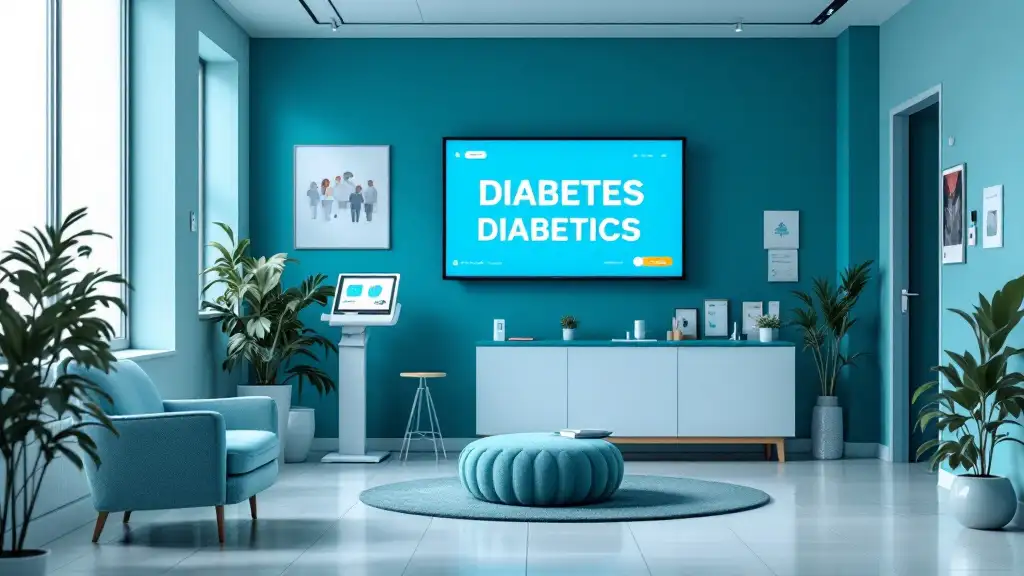
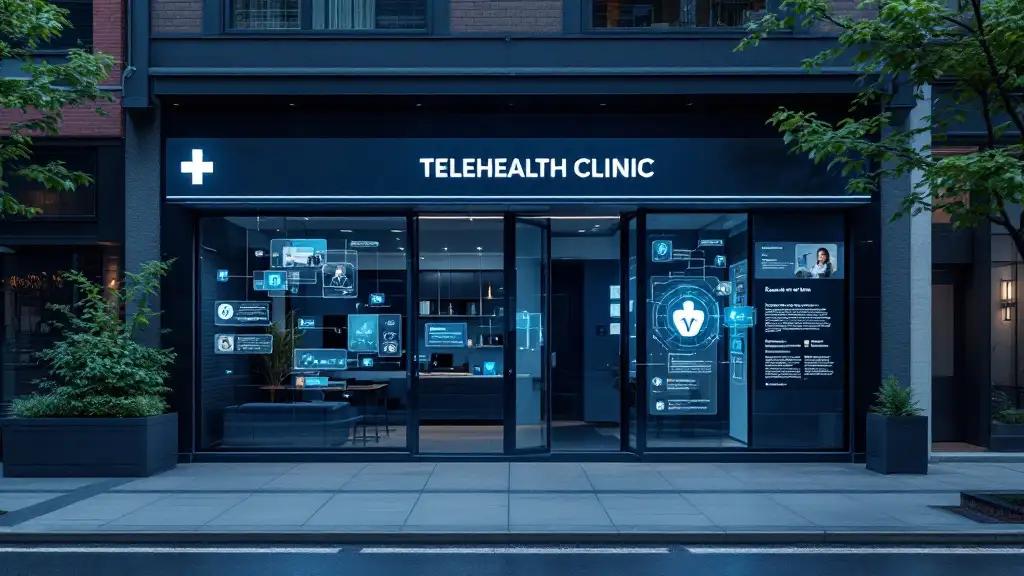
























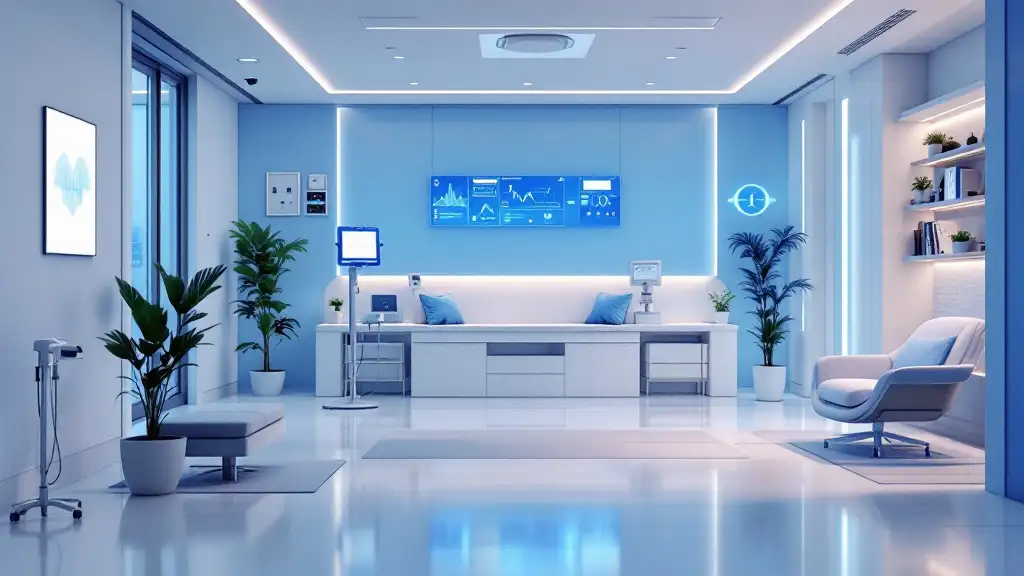







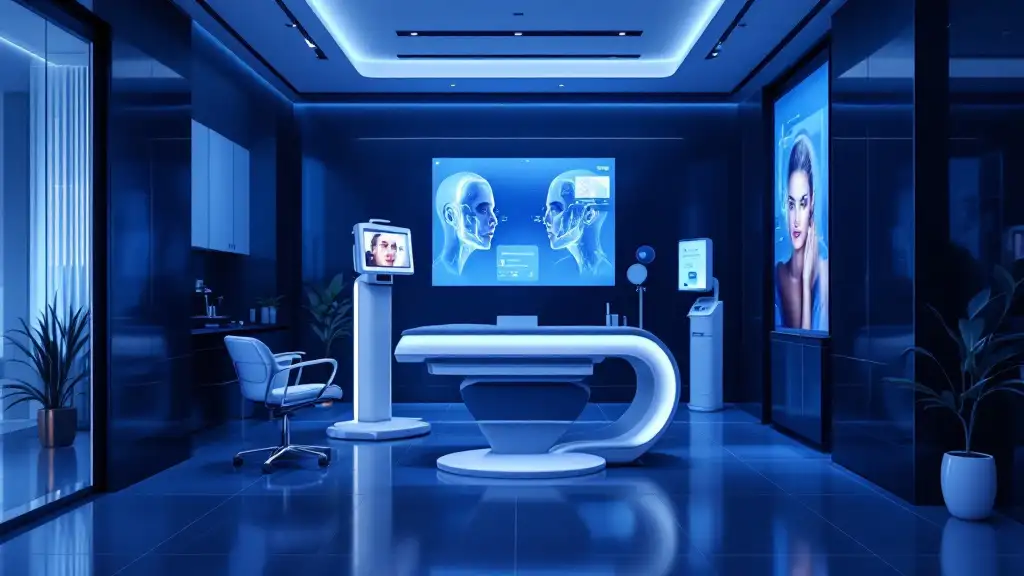

































.png)